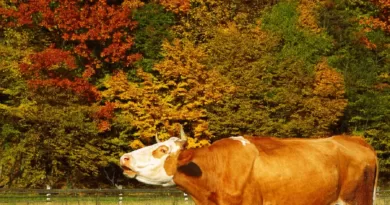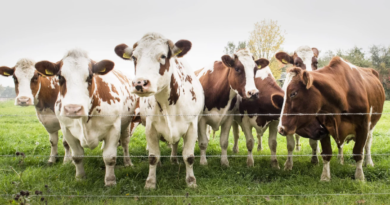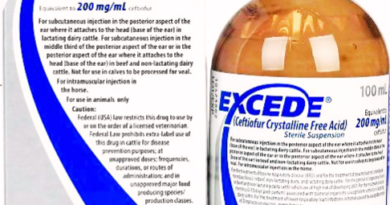Lethal Lumpy Skin Disease in Cattle: Causes, Symptoms, and Treatment in 2023
Lumpy skin disease (LSD) is a viral disease of cattle transmitted by biting insects. The disease is characterized by lumpy or raised skin lesions, fever, and lymph node enlargement. LSD can also cause secondary bacterial infections, which can lead to illness and death in severe cases. The virus that causes LSD is closely related to the virus that causes sheeppox, and it is thought to be capable of infecting both sheep and cattle.
However, the disease is much more commonly seen in cattle, and it is unclear why this is the case. LSD was first identified in Africa in the 1930s and has since spread to Europe, Asia, and South America. The disease has been particularly devastating to African countries, which are estimated to have caused millions of dollars in losses to the livestock industry. In recent years, there has been an increase in the number of cases of LSD in Europe.

The disease has now been reported in several countries, including Austria, the Czech Republic, France, Italy, Spain, Switzerland, and the United Kingdom. While LSD is not currently a significant problem for farmers in North America, it is essential to be aware of the disease and its potential effects on cattle herds.
It spread badly (2019-2020) in India, Punjab, and other states. Several animals died in India. In late 2021 – 2022 Pakistan faced this problem. LSD started in Sindh, Karachi, and Hyderabad. After that, this virus spread all over Pakistan. Neighbor country of Pakistan was facing this virus they took a step of vaccination earlier.
Approximately 14 million cattle farmers and meat sellers suffered from economic fallout due to this virus. The small farmer of meat and milk suffered a lot due to this virus.
What is a lumpy skin disease, and what are the symptoms?
LSD is a highly contagious viral disease that primarily affects cattle. The virus is transmitted by biting insects, and it causes the formation of lumps or nodules on the skin. These lumps can be painful and can lead to secondary bacterial infections. Symptoms of lump skin disease include fever, lethargy, loss of appetite, and dermatitis. In many cases, the virus can cause pneumonia and death. There is no specific treatment for lump skin disease, but vaccination can help prevent infection. Early detection and treatment of secondary infections are essential for preventing serious illness or death in affected animals.

What causes lumpy skin disease in cattle?
Lumpy skin disease is caused by a lumpy skin disease virus (LSDV). This virus is transmitted by biting insects, such as mosquitoes or midges. The LSDV is closely related to the viruses that cause rinderpest and Peste des Petits ruminants (PPR). The virus infects the skin and lymph nodes, causing the formation of lumps or nodules. The LSDV is a highly contagious virus that can spread quickly through a herd of cattle. Infected animals can spread the virus to other animals through direct contact or contaminated feed or water.
A virus spread by biting insects causes lumpy skin disease. The virus affects the skin and causes it to become lumpy. Lumpy skin disease is most common in cattle but can also affect sheep, goats, and camels. The disease is most commonly found in Africa but has also been reported in Europe and Asia. Lumpy skin disease is a severe problem for farmers because it can cause animals to lose weight, become less productive, and even die. There is no cure for lumpy skin disease, but it can be controlled through vaccination. Farmers should vaccinate their animals against the disease to help protect them from this serious threat.
How is Lumpy skin disease treated?
There is no cure for this disease, but it can be controlled with vaccination. Vaccination is the most effective means of preventing lumpy skin disease, and it is recommended for all cattle, sheep, and goats in areas where the disease is prevalent. Treatment of LSD typically involves managing the symptoms and supporting the animal’s immune system. Anti-viral drugs may be used in severe cases to help control the virus.
Lumpy skin disease can be a serious problem for farmers, leading to weight loss, infertility, and even death in severe cases. Early diagnosis and treatment are essential for managing the disease and preventing serious health problems.
Lumpy skin disease is a viral disease that affects cattle and is characterized by lumpy, thickened skin. The virus that causes this disease is spread by biting insects, such as mosquitoes, and can also be spread through contact with contaminated body fluids or manure.
Personal Experience of LSD in our herd
My Two animals were affected in June 2022. 1st animal was seen ill 3rd of June, but treatment started 7th of June at that time this animal was in stable condition. Our Doctor’s team started with Vitamin AD3E + Penbiotic 5gm daily for three days. But this animal was not getting recovered. We did Quarantine him and started with other treatments like showering and injectibles.
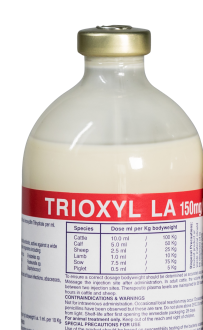


After some days 19th of June another animal got affected but luckily we started treatment on the same day. Continuously we gave him injectibles for three days this cattle got better. But 1st one got more ill and could not survive. The medicine mentioned below which we used as per our conditions. I will highly recommend to all farmers check their animals on daily basis. If you see any symptoms quarantine that animal far from your herd.
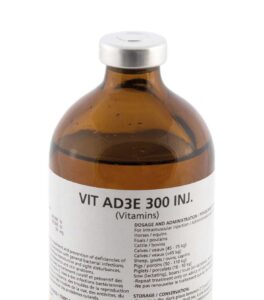
How to prevent lumpy skin disease?
In severe cases, LSD can lead to death. There is no specific treatment for this disease, but it can be prevented through vaccination. Farmers should work with their veterinarians to develop a vaccination schedule to protect their herds from this disease. Early detection and treatment of secondary infections are essential for preventing serious illness or death in affected animals.
Conclusion Paragraph
Conclusion paragraph: Lumpy skin disease is a rare, chronic autoimmune disorder that causes large lumps and lesions to form on the skin. The cause of LSD is unknown, but it is thought to be caused by an immune system malfunction.
There is no cure for this disease, but it can be treated with medication and surgery. There is also no known way to prevent LSD, but early diagnosis and treatment may help reduce the severity of symptoms. Humans can get LSD, but it is most commonly seen in animals such as cattle, horses, and pigs.

